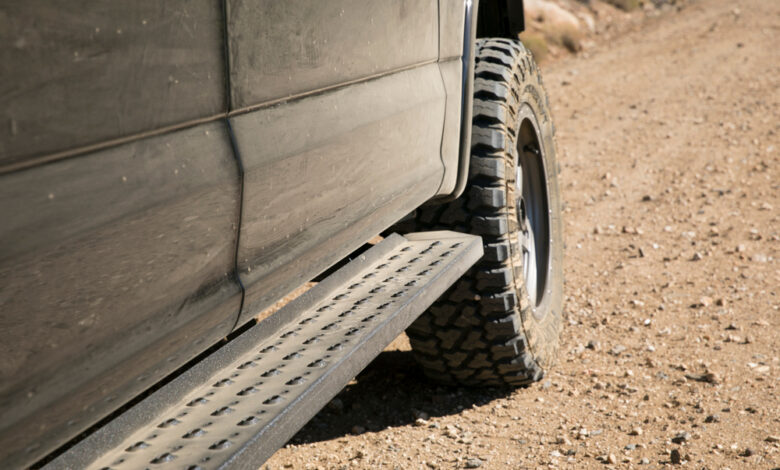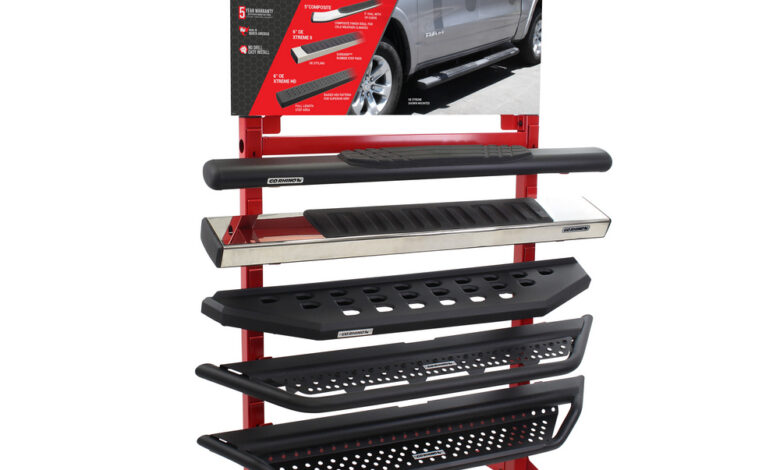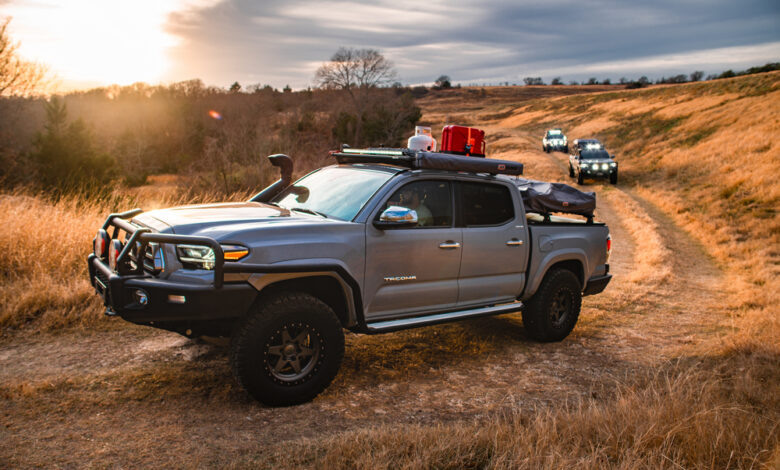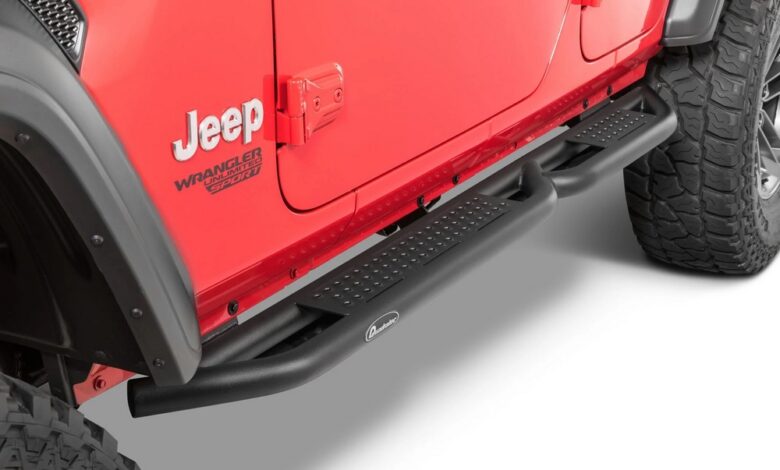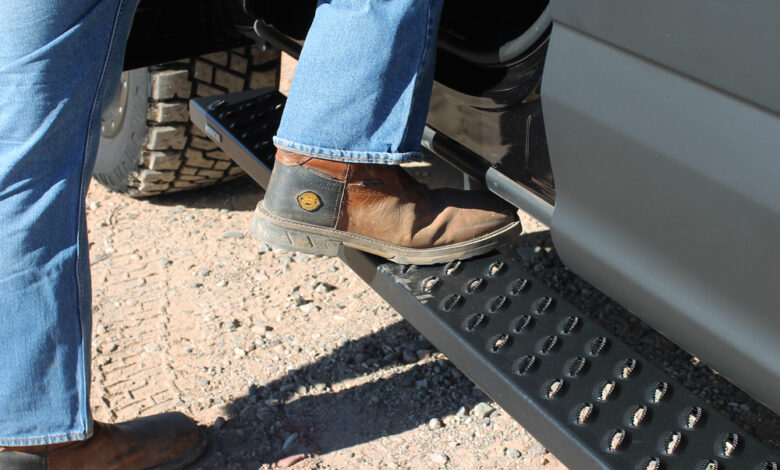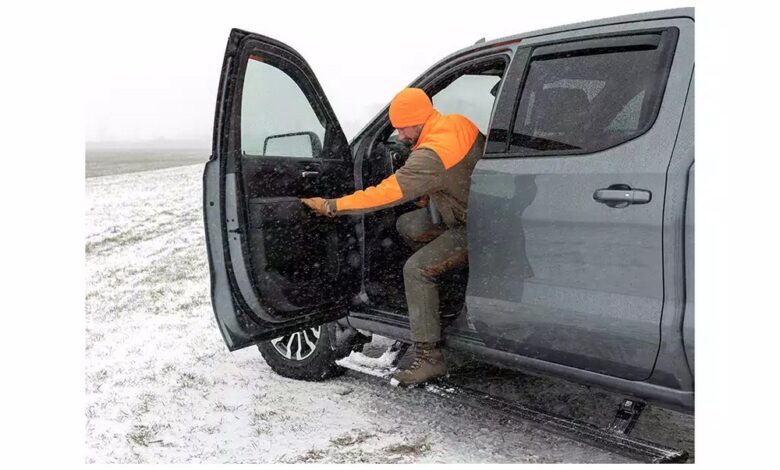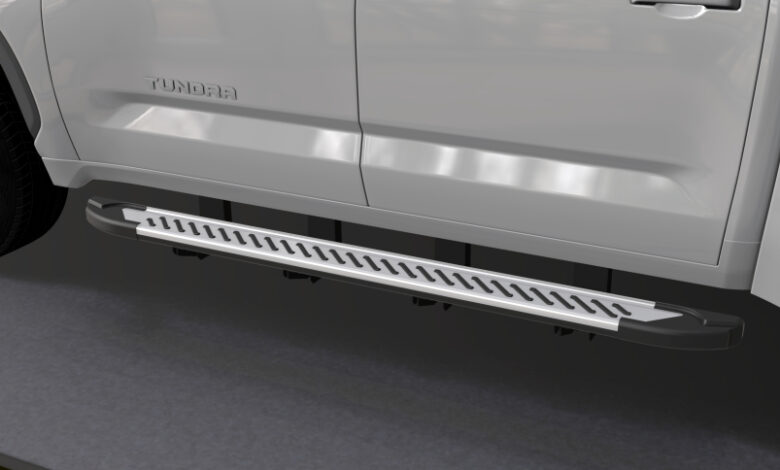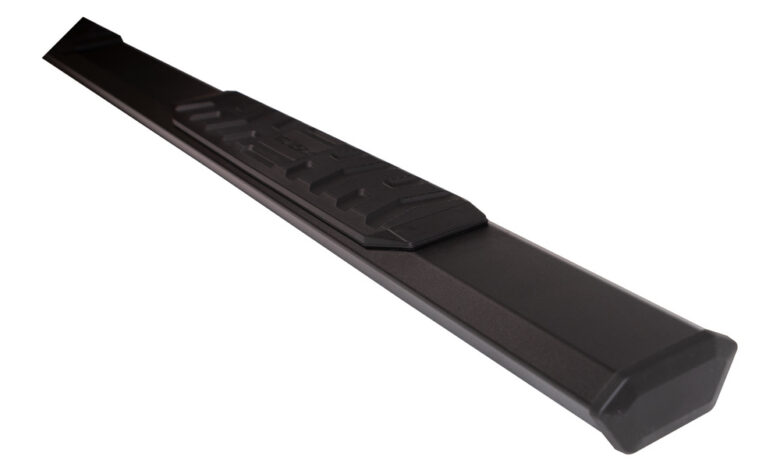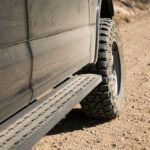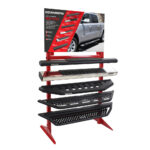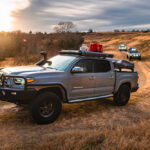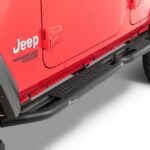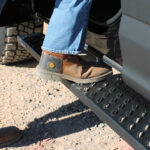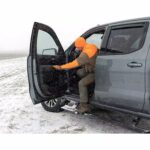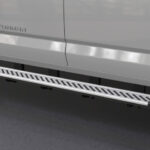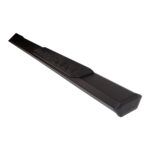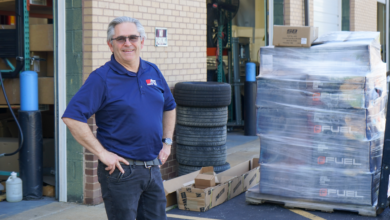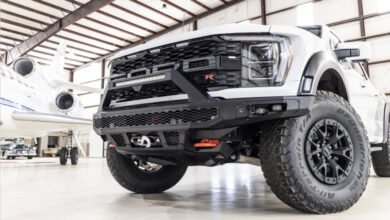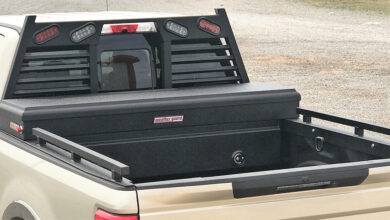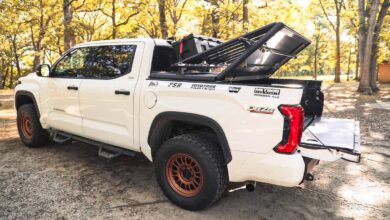This article originally appeared in the January 2023 print issue of THE SHOP magazine.
Running boards and steps serve a practical purpose by easing entry into taller vehicles, an aesthetic purpose by adding off-road appeal to trucks and SUVs, and even a protective purpose by guarding doors and fender areas from chips and dings.
If that’s not enough, they can also be an entry point to additional accessorization options for consumers new to the market who discover they prefer not just entering but also riding in style.
Today’s board and step products are keeping pace with new-vehicle designs, meaning there’s always something fresh to consider.
To learn more, suppliers outline recent changes to the market and sales tips for building business.
WHAT CONSUMERS WANT
Truck and SUV customers, and particularly those looking to go off-road, are prime candidates for board and step products.
“The category has grown tremendously over the years, with most Jeep packages not including a step from the factory,” says Howard Fullerton, senior category manager for Quadratec.
SUVs in particular continue to be a strong segment of the market, notes Hugo Baeza, executive director at Romik.
“I remember sitting in front of a few large regional distributors telling them that the SUV market was growing, and they should consider carrying our SUV products. Over and over, we were told ‘nobody needs running boards on SUVs.’ Fast-forward to 2022 and look around your neighborhood—every driveway has an SUV or CUV,” he says. “This segment was ignored by many but it’s not too late for distributors to start carrying SUV running boards.”
Creative innovations drive interest and growth in the products.
“New step profiles and materials give consumers more style options at different price points than ever before,” says Jane Donnelly, director of marketing for TrailFX.
Jesse Brown, director of marketing for Raptor Series, has watched the market “explode” over the past decade with many different brands and styles, meaning the choices can be overwhelming.
“I strongly suggest getting to know your reps and understanding what sets each brand apart,” he says. “You may have some of the newer brands who come in with a stellar price point but simply will not deliver when it comes to service after the sale. Do your due diligence and seek out the brands that are committed to your success.”
Coelette Chenier, marketing manager for ICON Vehicle Dynamics, has also seen a rise in suppliers.
“The market has become very saturated with options, especially overseas knockoffs using subpar materials,” she says, referencing reports of failed off-road applications. “It seems the most dependable and longest lasting of these types of products are those of rigidity and strength.”
MATCHING THE MARKET
Today’s running boards and steps must match the construction and appearance standards of the latest new-vehicle designs.
“The market has changed and evolved over the years due to advances in vehicle technology. Our own electronics must evolve to meet the changes with these new vehicles,” says Trina Hemann, marketing manager for RealTruck. “In addition, the contours of the vehicles affect how boards and steps are designed and installed.”
Processes continue to move forward.
“The evolution of material science and the implementation of FEA have been the most influential changes to steps in the past decade,” says Moea Theroux, marketing manager for ARB 4×4 Accessories. “With material advancements, off-road vehicle bodies are becoming more sculpted and aesthetic, but with less inherent strength. While there are design benefits to this, it’s made chassis mounting running boards and steps even more important to maximize strength and protection.”
“Warranty and workmanship have become more important factors in closing the sale,” agrees Dave Williams, director of sales for Go Rhino. “Certain styles, primarily the shiny traditional looks, have become commodities. Customers are leaning more toward off-road styling and durable black powder-coat finishes.”
Current vehicle trends are favorable to the running boards and steps market, says Evan Grass, product manager for truck accessories at Lippert.
“Over the last 10 years, trucks and SUVs have increased in size and height, and tire size has increased as well. Today, many SUVs come standard with 33-inch tires and some such as the Ford Bronco, Ram TRX and Ford Raptor come standard with 35-inch tires,” he says. “As the popularity of larger tire sizes has increased, the popularity of running boards and steps has increased as well. With this increase in popularity there’s a larger variety of board and step styles, finishes and features available.”
There are also more options for unique technology, such as powered running boards, Grass continues.
“This means that shops have the advantage of having a much larger selection of styles, designs and technologies to sell that are tailored to suit the customer’s exact needs and budget.”
NO TROUBLE AT ALL
Suppliers note that drivers seeking suspension lifts, flares and related products will likely be interested in a board or step to ease vehicle entry and complete the look.
“Most steps are very easy to install, so they can be a very easy way to increase a build’s value,” Fullerton notes.
And customers can come from many walks of life.
“There is a step or board for every consumer segment, from the lifted pickup owner to the off-road Jeep enthusiast seeking body protection to the professional contractor who is concerned about safety on the jobsite,” Donnelly reveals. “A selection of steps and boards serving all these segments can absolutely lead to other segment-specific product sales to these customers, such as bed protection, recovery products and cargo management solutions.”
The products can serve as an entry point into added accessorization, says Grass.
“Running boards and steps are often the first customization a truck owner will make. When shops sell steps, they have a customer that may be interested in upgrading their bumpers or adding hitches, headache racks, lift kits, etc.”
Brown calls boards and steps “just the tip of the iceberg when it comes to accessorizing your vehicle” and notes the products don’t have to be one-and-done.
“Not only are there other areas of your clients’ vehicles that more than likely could use some attention, but often there are upgrades for the boards and steps as well, which can help increase their investment on their first visit,” he explains, noting that for his company’s Slide Track Series running boards, “we offer additional upgrades such as bracket covers and LED lighting kits to customize the running boards to your clients’ liking.”
Chenier believes that when a customer walks in the door for steps or running boards, there is an opportunity to upsell.
“They might be inquiring about steps, so why not offer them the matching bumper or body protection, too?” she asks, adding that “these items typically have more margin to gain, being that they are usually less engineered, so pricing is usually in the dealer’s favor.”
Other attractive package sales could include bike racks, roof boxes, roof rails, wind deflectors and more for retail and wholesale clients, adds Baeza.
“If your shop services car dealers, you will be able to expand your market share by offering them running boards.”
Complementary products are a good place to start.
“Consumers interested in steps are a great upsell opportunity for rock sliders or side rails,” Theroux says.
And their utility builds trust in other accessories.
“While boards and steps provide an access solution to getting into and out of vehicles, they are also an introduction to customization for many consumers,” says Williams. “This creates the opportunity for shops to expose consumers to many other product categories for accessorizing their vehicles.”
When in doubt, determine what your customers enjoy and go from there.
“Whether for fishing, off-roading, camping or any adventure, accessories give the vehicle owner their own look and feel to complement their style,” says Hemann. “A step is a huge piece that adds form and function to the build.”
MAKE YOUR PITCH
When it comes to increasing sales of boards and steps, again it makes sense to start with drivers looking to ride high.
“Recommend steps as a necessity for any customer who is looking to lift their Jeep,” says Fullerton from Quadratec.
Brown from Raptor Series suggests including boards and steps in your sales area.
“Assess your showroom setup and ensure that you have all of the latest information available on the brands that you have access to,” he says. “We have several products that have been available for a few years now that some of our clients simply are still unfamiliar with. Make sure you are receiving all of the latest product update emails from your go-to brands to ensure you are getting the latest and greatest products that are available to you.”
P.O.P. stands can trigger interest with walk-in clients.
“Feature step displays offered by many manufacturers prominently in your shop and ask how the customer uses their vehicle before making a recommendation,” says Donnelly of TrailFX. “Suggest matching wheel and bumper finishes to create a packaged look.”
The more detailed the areas are, the more helpful they can be, says Williams from Go Rhino.
“Have displays on the showroom floor that show a variety of styles and price points so the customer can experience the product’s weight, feel, width, look, etc. Then combine that with a configurator tool to show the customer what the product will look like on their vehicle.”
Including the latest offerings on your shop truck is also helpful, adds ARB’s Theroux.
“Display steps on-vehicle whenever possible to demonstrate how much more accessible they make a vehicle.”
Education goes a long way toward a successful sale, says ICON’s Chenier, meaning a conversation is often in order.
“Provide your customer with information they didn’t know they needed; always ask how they intend to use their vehicle. Is it a daily driver? How often or how extreme is their off-road lifestyle? Do children ride in the vehicle? By asking these questions, you help the customer realize needs beyond their initial inquiry. You can help teach them what they need and don’t need, and that creates a trusting relationship, thus creating maximum opportunity on both sides of the counter,” she says.
Shops can use displays, pamphlets and related printed and online literature to help educate customers about the products, and then be ready to answer questions as they arise, says Lippert’s Grass.
“Have knowledgeable staff available in your storefront to help guide the customer on varying lineups, their unique features and price points. Each customer has differing preferences and budget, as well as differing functional needs.”
A large selection is also advised, according to RealTruck’s Hemann.
“Make sure that your offerings are diverse. Have a variety of products on hand to meet the customers’ needs,” she says. “You will want to offer entry-level, mid-price point and best-in-class options in the step/board category to be sure you capture all the potential sales, no matter what the customer is looking for.”
Finally, be open-minded and never say no, if possible, recommends Baeza.
“When a customer walks in with an Audi, BMW, Cadillac, Land Rover, Subaru or any other SUV that your shop normally does not service, look to Romik for your SUV running board needs,” he says. “When word gets around that your shop is a complete one-stop shop your business will flourish.”
